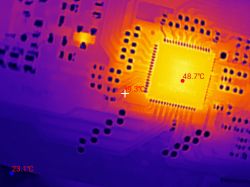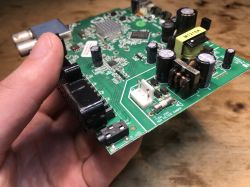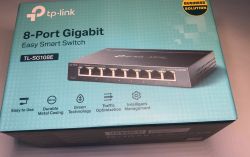 .
.
A switch is a device that connects different equipment on a network and allows them to exchange data. A switch differs from a router in that it is used to network multiple devices, whereas a router also connects different networks. A switch is often used when you are short of ports on a router - it can be added to a network without additional configuration. But what is the difference between an ordinary switch and a switch referred to as "smart" in marketing? What are the differences inside? I will try to find out here.
Installing a network in a new home is a good opportunity to buy a switch. Nowadays, you already have to hook up the internet to practically every room, and WiFi, in my opinion, is not reliable enough to rely on alone. Increasingly, I find that a room needs not one or two, but actually three or four Ethernet sockets - for example, one for the TV, another for the set-top box, a third for the games console and a fourth for the computer or laptop.... so undoubtedly switches are certainly becoming more and more popular in our homes.
But let's leave my thoughts and focus on the specifics. On the occasion of installing a network in a new house, I was given access to two switches from virtually the same series , models TL-SG108 and TL-SG108E. The former is neither programmable nor configurable, while the latter is referred to in marketing as 'smart' - it is with the latter that a panel with advanced settings is available.
I will briefly introduce them here and compare their interiors. I will also introduce the configurable switch panel, although I will not explain it in too much detail, as I have not yet used many of the functions there myself.
Let's start with the former, model TL-SG108.

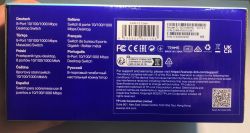
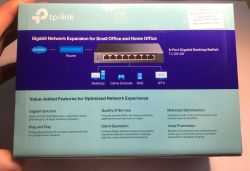 .
.
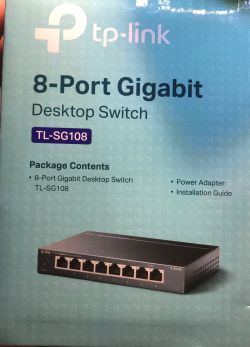 .
.
The TL-SG108 is equipped with 8 10/100/1000Mbps ports. It also comes with a power supply and instructions. The power supply is T050060-2C1 5V 0.6A 3W, so such a switch is undoubtedly not a power hungry device. We unpack - there are even feet included.

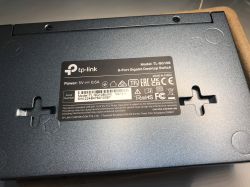
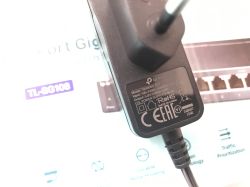 .
.
Connecting the switch is very simple - it simply, in simple terms, 'expands' the router's ports. We tested it on a workbench before installing it:
 .
.
However, we're in the 'Inside the devices' section, so it's time to take a look inside. The casing is solid and metal. I was surprised by its weight.
 .
.
All eight Ethernet ports are one module. It's probably cheaper that way. In addition, they have separate eight signal/isolation transformers. The eighth is on the front of the unit - it didn't fit them on the PCB.
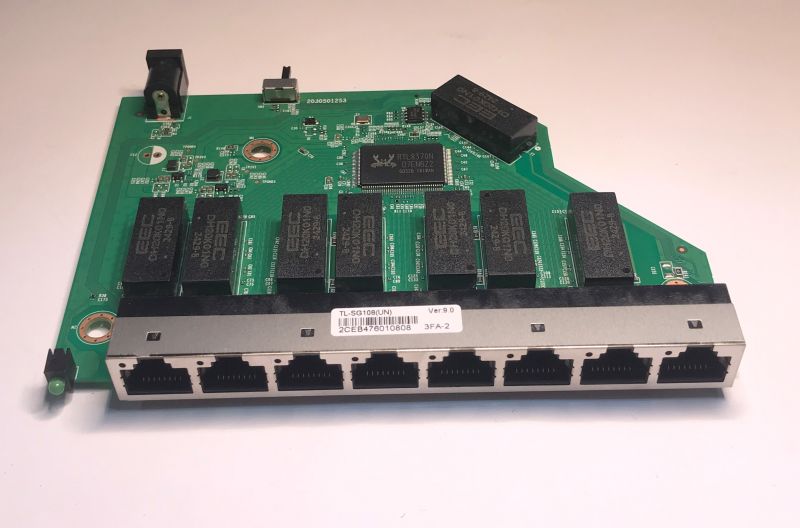 .
.
Next to the DC Jack is a section with inverters providing lower voltage for the main MCU and memory.
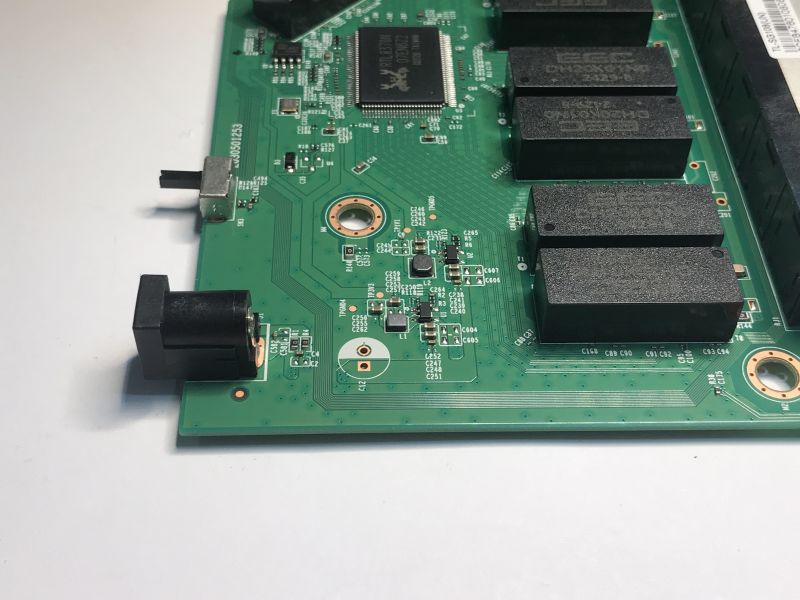 .
.
The switch is based on the RTL8370N. The catalogue note describes it as a managed switch controller - "LAYER 2 MANAGED 8-PORT 10/100/1000 SWITCH CONTROLLER ". Managed? That's interesting, because after all, this version was supposed to be the "unintelligent" switch.
 .
.
 .
.
Block diagram:

 .
.
Indeed, there is a Flash memory nearby:
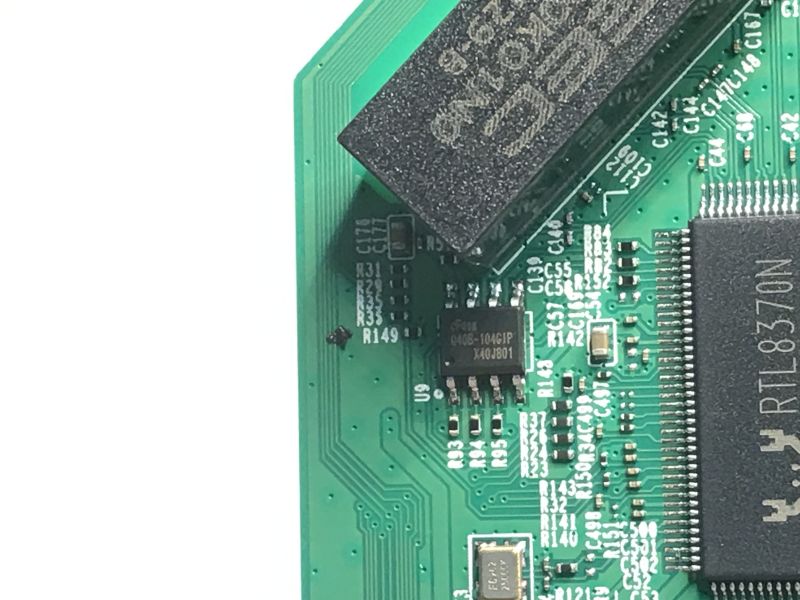 .
.
That's now a few more pictures and it's left to dump the memory to a file.
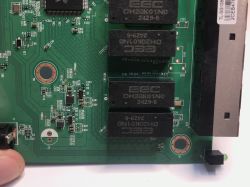
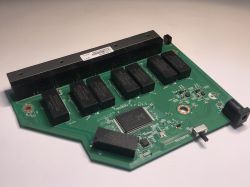
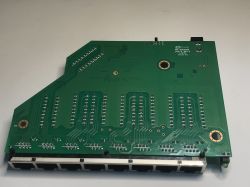 .
.
I have not played with the clip method. It is not very reliable. I have a hot air and can quickly solder such a memory bone onto the CH341 programmer overlay with it.
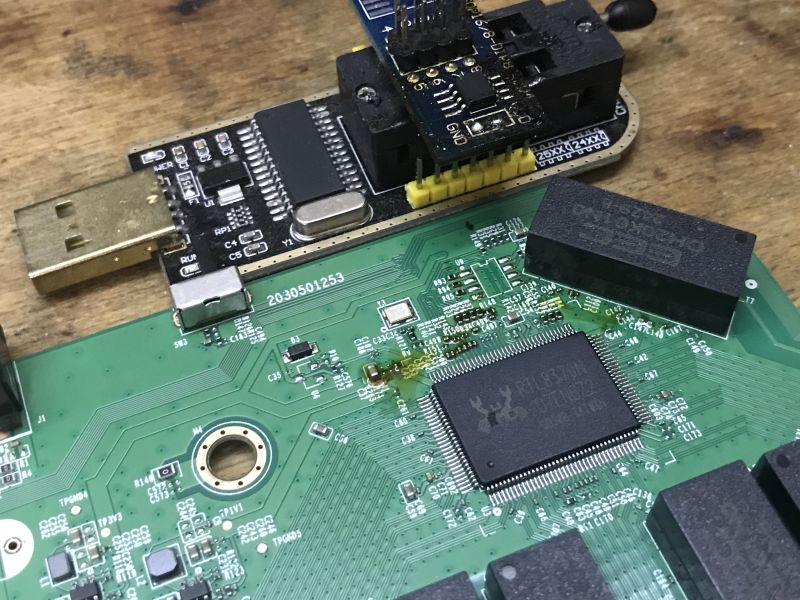 .
.
The memory is EN25Q40, 4 megabits, SPI NOR from the 25xx family.
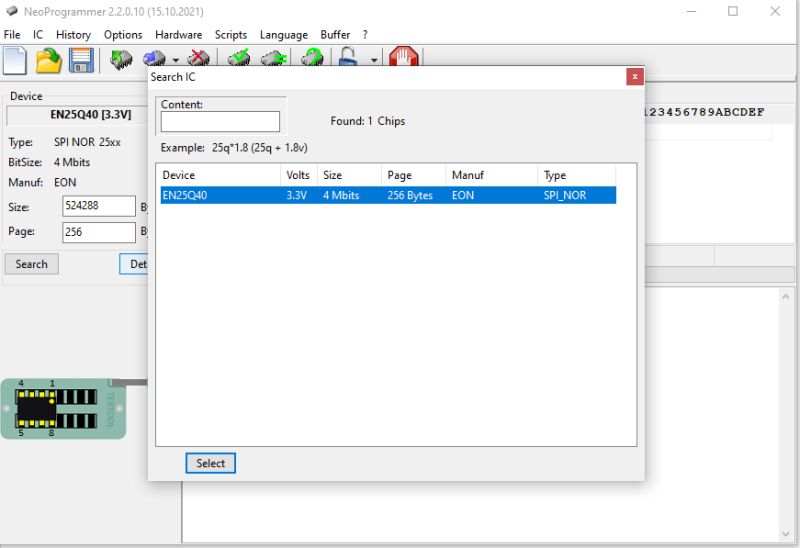 .
.
A snapshot of the memory is available on my repository:
https://github.com/openshwprojects/FlashDumps
Now it's time to take a look at a brother product - a managed switch.



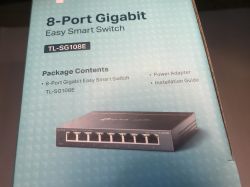
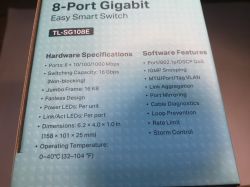 .
.
Extract. Set as before.
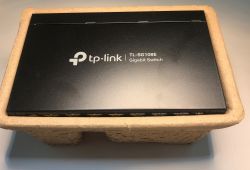

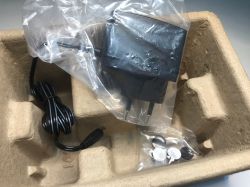 .
.
The switch looks very similar from the outside. The RESET button on the back is obligatory, the Kensington connector (for the anti-theft cord) is too.

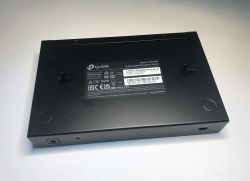
 .
.
We take a look inside. The interior is ... quite similar, although the isolation transformer is a different part model.

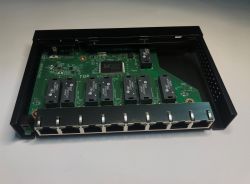
 .
.
Everything looks very similar. The power section, the memory, the main controller ... The quartz resonator is in a different housing, but the attention is drawn to something else.


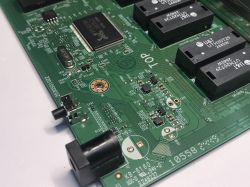 .
.
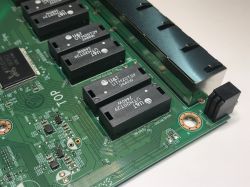

 .
.
The main controller is the RTL8370N. Again - it's the same one as before. The difference seems to be in the software itself. I'm inclined to go as far as to say that it's likely that after losing the Flash memory from the TL-SG108E to the TL-SG108, the latter would gain manageability.


 .
.
I ripped the memory, of course:
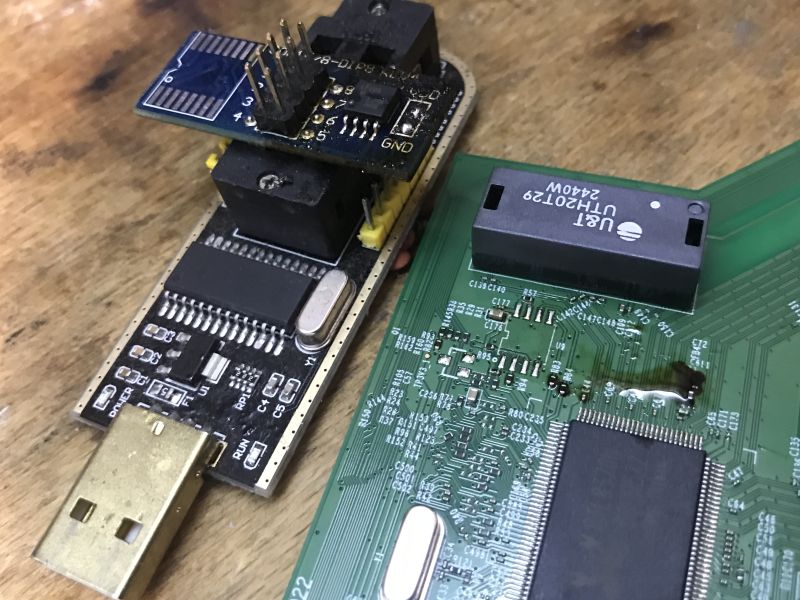 .
.
Here the memory is slightly larger.

Now I'll show you what else such a switch can manage. We start by connecting it to power and network.
 .
.
Our DHCP router will detect the new device:
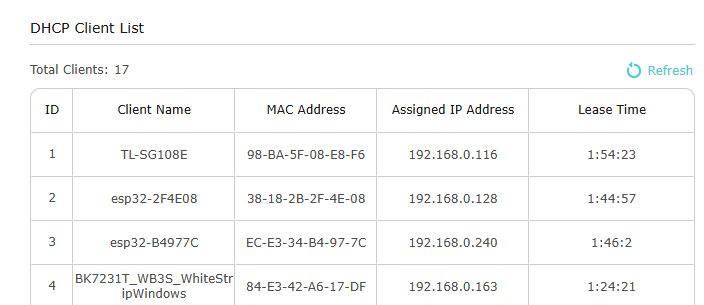 .
.
We visit its IP address and log in with the data from the sticker.

 .
.
On the homepage we have general information about the device:
 .
.
DHCP and IP is configurable - this is basic.
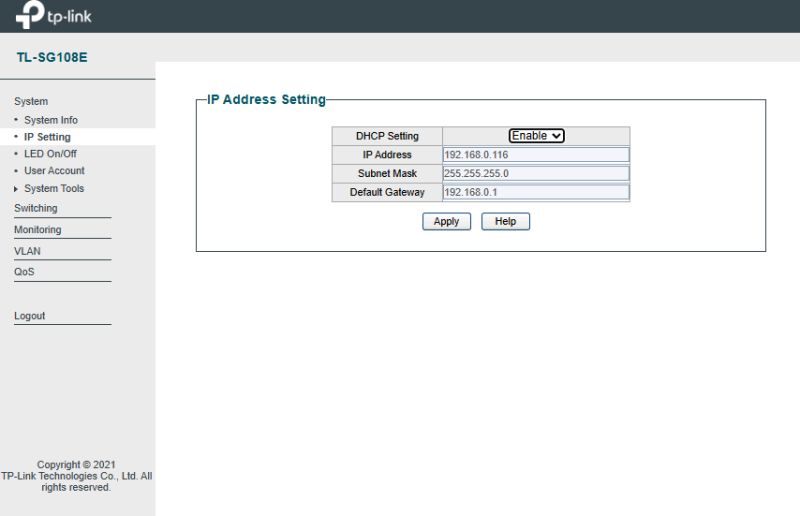 .
.
Does the blinking LED bother you at night? Not a problem, here you can switch it off.
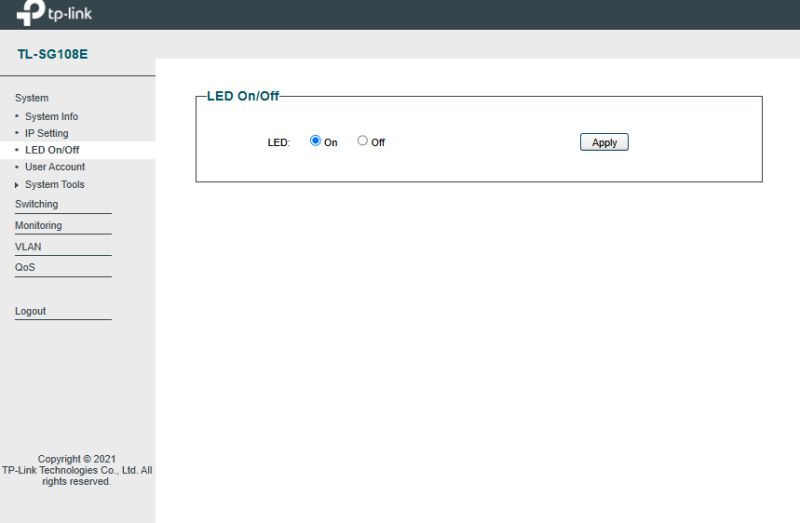 .
.
The login password can of course also be changed.
 .
.
The entire configuration can be saved to a file and restored from the file.
 .
.
The reboot (restart) and reset (restore to factory settings) options are unlikely to require comment.

 .
.
Update option:
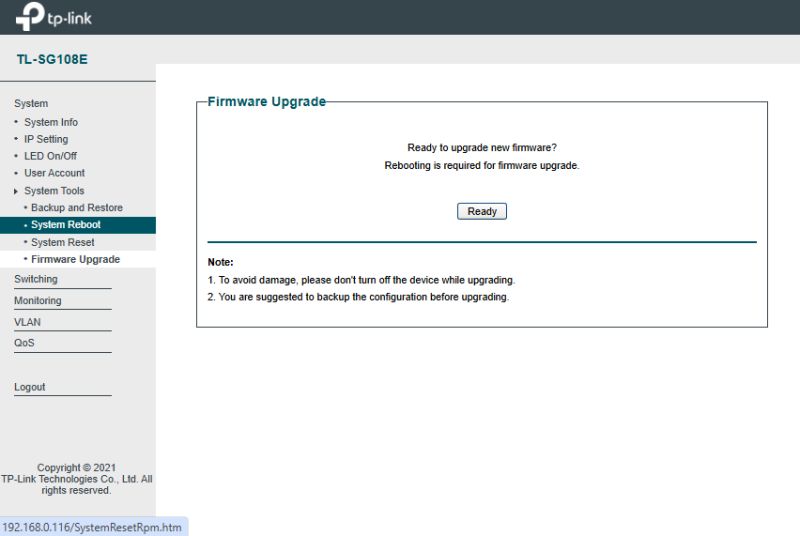 .
.
In the switching tab it gets more interesting. .
Here you can check and configure, enable or disable the ports. You can change their baud rate and mode. Flow control can be set.
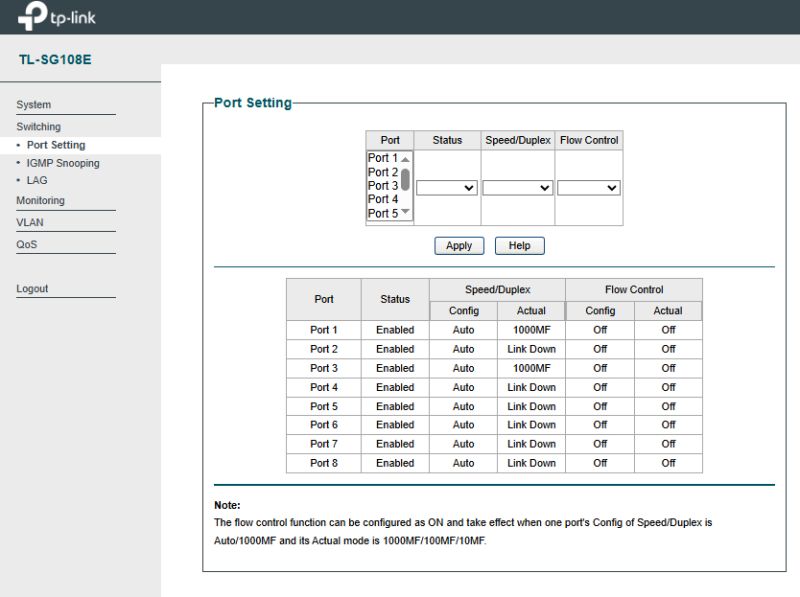 .
.
IGMP Snooping is an option to manage multicast traffic (distributed to multiple recipients at the same time) so that these packets only go to the correct location (host), without overloading the entire network.
 .
.
The LAG setting is, counter-intuitively, not a delay setting, but a Link Aggregation Group option. It allows several physical ports to be combined into one logical port. This increases transfer and adds redundancy.
 .
.
In the monitoring tab there are, among other things, port statistics:
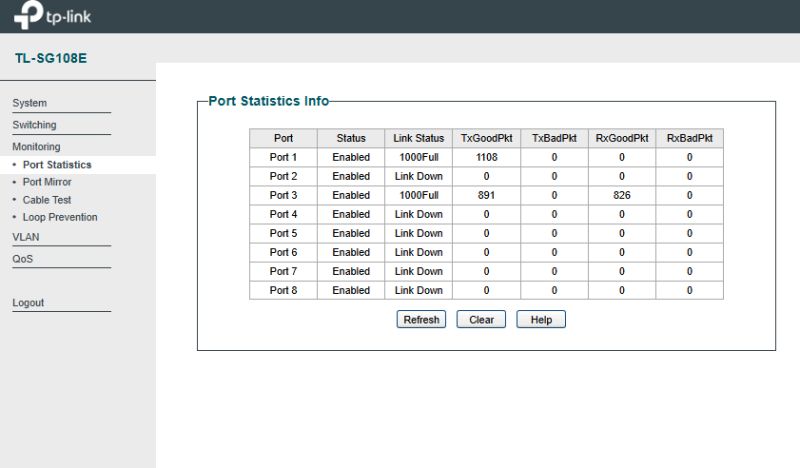 .
.
Port mirroring allows traffic to be duplicated from one port to another. Ingress is the incoming traffic on a given port and egress is the outgoing traffic.
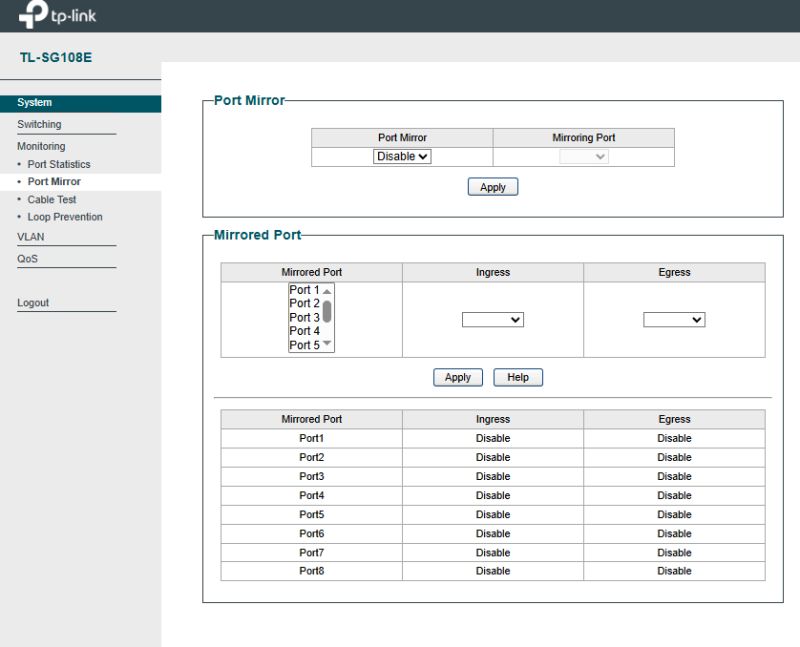 .
.
Cable test is used to check the connection. It is capable of detecting short circuits, opens and even distance estimation.
 .
.
Obout is the configuration of VLANs, or virtual networks. VLANs are used to logically divide one physical network into several separate parts + e.g. separately for departments in a company, even though everything runs on the same cables. This increases security, order and control over who can communicate with whom on the network.
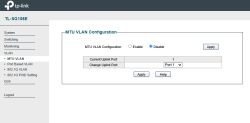
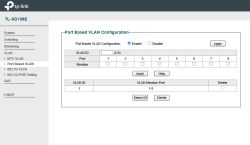

 .
.
Finally, there are the QoS settings, or Quality of Service. They allow you, for example, to prioritise or limit the transfer for a particular port.

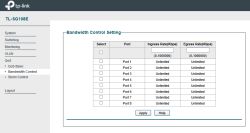
 .
.
I looked at some more memory dumps:
 .
.
You can see here the system messages and the page sources (HTML, CSS, Javascript...).
 .
.
And I think that's it...
In summary , it looks like both switches are made on the same RTL8370N chip. The only major difference I've seen is the size of the Flash memory - once 4 and once 16 megabits. I'm even inclined to say that all the manageability (marketing-wise: 'intelligence') of this TL-SG108E is just a software issue. The RTL8370N itself is described as managed, so this chip supports that potentially in both devices.
It could be checked - swap the Flash memories - but I didn't take that risk, because these switches are supposed to last a long time and it would be a shame to break them right after purchase.
In our case it was... £99 for a 'regular' switch, and £105 for a managed one. I guess that clarifies things a bit and at the same time nullifies the point of flipping the flash memory.
By the way, I managed to present what such a manageable switch offers - maybe someone will find it useful.
And which switches do you use and for what? What "manageable" switch functions do you think are useful?
Cool? Ranking DIY Helpful post? Buy me a coffee.




